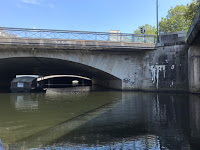In which Sid and Doris have a rest day in Rennes and take a boat trip along the Vilaine River.
When we set off for Rennes we decided that night we would see if we were in good shape to carry on. We are a bit tired, we are behind with the blog/diary and Rennes has enough to keep us amused, so we are here for another day.
We are staying in the Mercure de la Parlement which shares the block with the Ouest France editorial offices. Sud Ouest and Ouest France have been our main papers for three weeks. There we found the Big Bands at Pertuis. There is a great mix of international news (e.g. from the G7 meeting at Biarritz), the extremely local (the preparations for the new term at the nursery school) and always something on the rural economy. Sid is a great fan.
However it was searching through the Rennes Tourism site that we found the barge trip. Sid thought he had booked a little electric day cruiser. What it turned out we had bought was a guided tour of the architecture and economic development along the Vilaine River. The boat is a ten metre Loire peniche that was used for carrying river sand for building. It has a cabin for the family, which often were the motive power too – apparently the wife would tow the boat in a shoulder harness while doing something useful with her hands like knitting – and has very little draft as the Loire is not deep. Our boat has a small engine and space for about a dozen eager searchers after knowledge [including at least one cyclist having a quick nap in the tunnels – D.]. We put on no sun cream, though as we are out in the Northern France sun for two hours after 102 days this turns out not to be a problem.
The river is now a feature of the town, at least outside the centre. Where once there were gas works, paper mills, print works and abattoirs there are now smart flats all with river views. In town the river was first straightened to make commercial quays and then bridged over to make squares, roads and later, car parks.
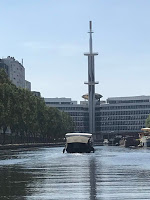 There is now debate as to whether the car based town planning of the post war period should be reversed to reveal the river. Our boat trip takes us back under the town, and then out past bourgeois houses from the 1860s, decorated buildings from the ’30s, austere works from the ’50s. We see the space age PTT building, very reminiscent of the BBC television centre. The space age was a long time ago.
There is now debate as to whether the car based town planning of the post war period should be reversed to reveal the river. Our boat trip takes us back under the town, and then out past bourgeois houses from the 1860s, decorated buildings from the ’30s, austere works from the ’50s. We see the space age PTT building, very reminiscent of the BBC television centre. The space age was a long time ago.
Doris is much given to jigsaw puzzles. The fantasy games shop offers fantasy puzzles and these join the pile of #virtualsouvenirs, though could be converted later [hint hint! never too late for a late birthday present! – D].
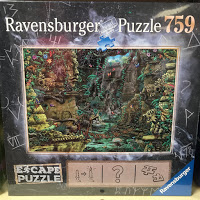


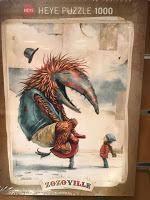
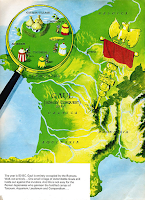
Sid and Doris are great ones for a town museum and we catch the last day of “Les Vies d’une Ville”, the story of the development of Rennes over the ages. We scoot through the Celts and Romans, pausing only to note that lower-class Roman shopkeepers were bearded and had man buns. Clearly more research has been done since Sid was at school when Romans were generally pictured as having just left the school barber. How learning does advance.
A map shows that at the time of the Romans, Gaul was divided into four parts. As any fule kno (you did follow the Down With Skool link, didn’t you?) there was a fifth part which was Asterix’s village, but we look in vain for them on the Rennes map.
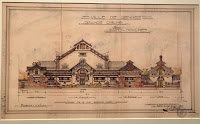
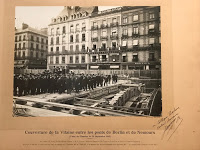
We have a couple of favourite exhibits. One is the design for the pool and public baths not built until a few years after the design. [I have claimed this picture as a #virtualsouvenir – D – and I’ve also added in a picture of the triumphant roofing-over of the canals.] The other is some very good German propaganda pointing out that it is the Allies who are bombing the town and encouraging townspeople to join the Germans in their struggle.
Doris was also very taken by a set of watercolours by Charles Oberthur of the life of the 7th Artillery Regiment. [Do zoom in and take a closer look, they are fab – D.]

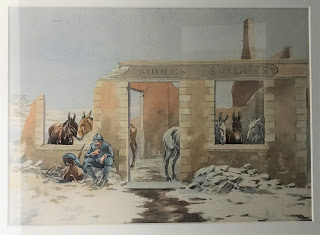
The authorities are promoting the local Breizh language and we see it it on signposts. French was imposed as part of Napoleonic nation building. Possibly it took a while for the language to be picked up again because in the 1930s and 40s the Brittany Nationalists had set themselves up as a local authoritarian party with flags, armbands, hats and moustaches. When these fell out of fashion maybe the language was associated with the movement? There are a claimed 250,000 speakers of Breton. Never heard one.
Just in case the opportunity does not come again Sid seeks out French steak and chips dinner. You can’t be too careful.
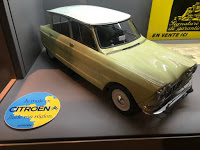 PS Conveyance of the day competitors are our little barge, these bigger versions, a museum model of a Citroen Ami and single geared bike. Not a big day for this award. The Ami is in the town museum because the first Citroen factory much outside Paris was here in Rennes.
PS Conveyance of the day competitors are our little barge, these bigger versions, a museum model of a Citroen Ami and single geared bike. Not a big day for this award. The Ami is in the town museum because the first Citroen factory much outside Paris was here in Rennes.
